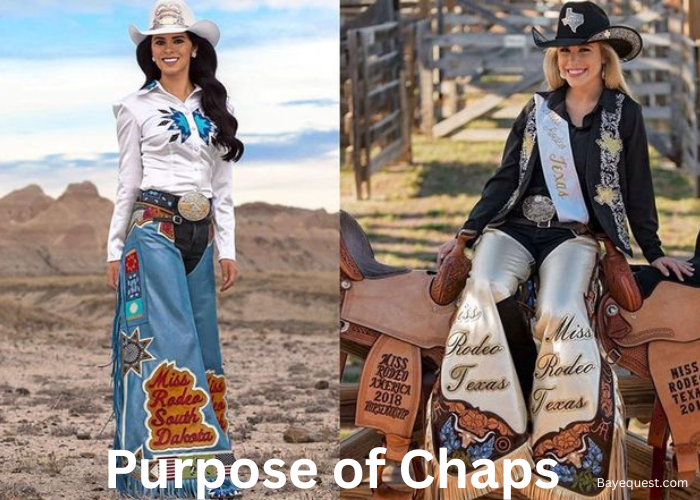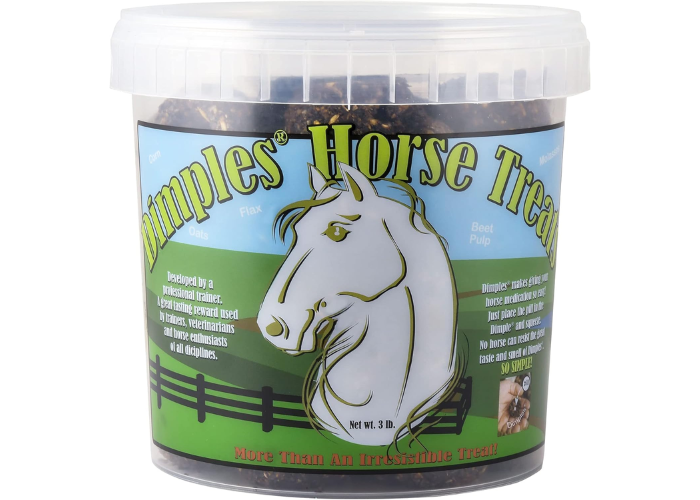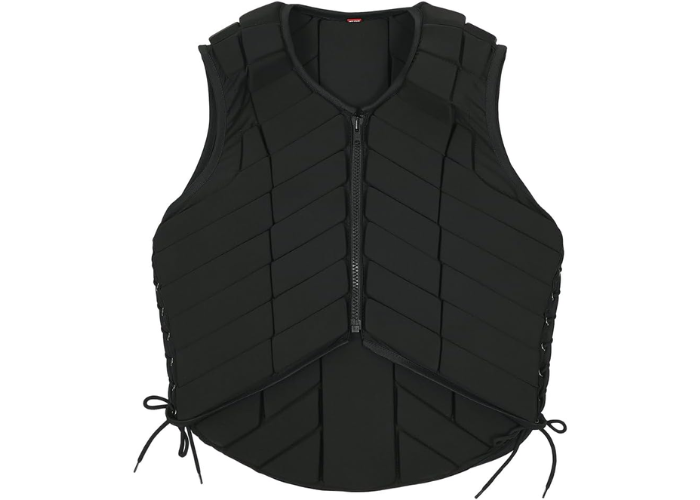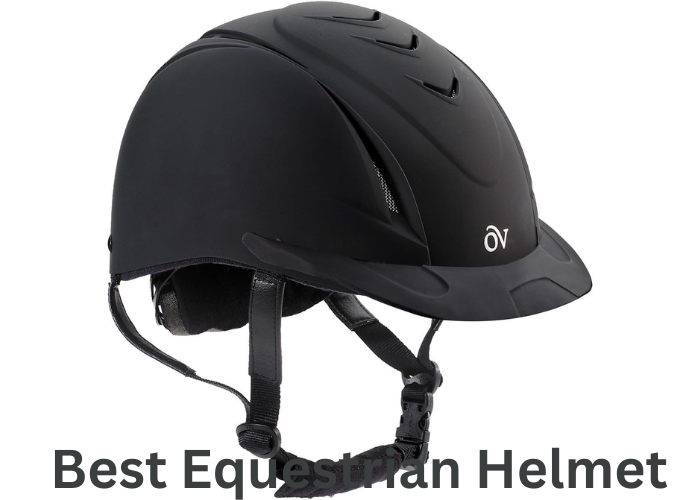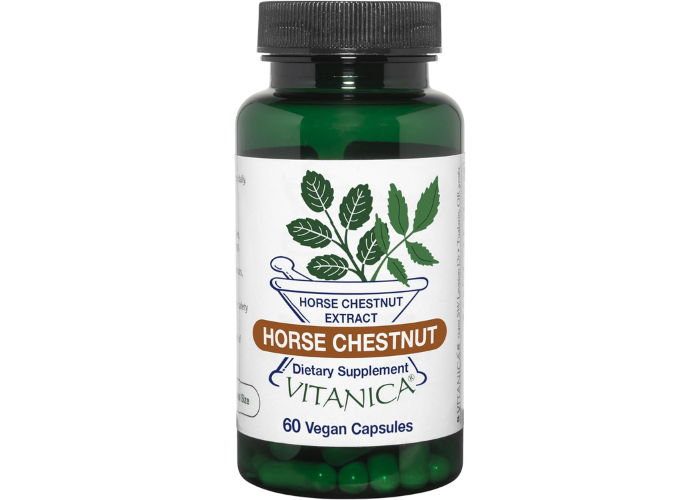They flap when you walk and squeak when you ride. But chaps aren’t just cowboy flair, they are for a good reason.
These tough leather leggings protect your legs from thorns, weather, rope burns, and even angry cattle.
Whether you’re riding through brush or showing off at a rodeo, chaps are all about function.
Some are snug. Some are wide. Some even come with fringe for a bit of flair. But every pair has a purpose.
Let’s ride through the world of chaps and see what they’re really made for.
What is the Purpose of Chaps? Key Takeaway
Chaps protect a rider’s legs from thorns, kicks, rope burns, and harsh weather. They also improve grip in the saddle and offer warmth in cold conditions. Worn over jeans, chaps are essential for ranch work, rodeos, and trail riding. Their main purpose is safety, durability, and riding comfort.
What are Chaps?
Chaps (pronounced “shaps”) are protective leather coverings worn over pants. They don’t have a seat or crotch, just two leg panels connected by a belt at the waist.
Cowboys, ranchers, and rodeo riders wear them to shield their legs from thorns, brush, kicks, and harsh weather.
The word comes from the Spanish chaparreras, named after the thorny scrublands (chaparral) they were meant to protect against.
While they’ve become a symbol of Western style, their primary purpose is to ensure safety, durability, and comfort during strenuous, physical work on horseback.
What is the Main Purpose of Chaps?
Chaps might look like simple leather leggings, but there’s more to them than meets the eye. Riders wear them for several practical reasons.
Below are the key functions that make chaps an essential part of any serious horse rider’s gear.
Protection
Chaps shield your legs from hazards like thorny brush, barbed wire, cactus spines, and biting insects.
They also protect against scrapes, burns from ropes, and accidental contact with livestock hooves.
This makes them essential for ranchers and riders working in rugged outdoor environments where injuries are a constant risk.
Grip and stability
The textured leather of chaps provides better friction between your legs and the saddle. This helps you stay balanced, especially during fast turns, jumps, or sudden movements.
Riders gain more control over their seat and posture, which is crucial when working with unpredictable animals or navigating tough trails.
Warmth and weather protection
Chaps act as a weather shield, blocking cold wind, rain, and snow from soaking through your jeans.
In chilly climates, insulated or wool-lined versions (like woolies) help retain body heat. Even in wet conditions, chaps prevent your legs from becoming soaked and stiff while you ride or work.
Tradition and style
Beyond function, chaps carry deep cultural meaning. They’re a symbol of cowboy heritage and Western pride, worn in rodeos, parades, and shows.
Their fringes, tooling, and custom details make each pair unique. While rooted in practicality, chaps also represent the spirit, identity, and legacy of ranch life.
Leg communication
Good riders use their legs to guide and cue their horse, especially in disciplines like reining or cutting. Chaps allow for close contact with the saddle and horse, while still offering protection.
This balance lets riders communicate clearly through pressure and movement, without sacrificing safety or control.
Thigh protection
The upper legs often take the brunt of ranch work, ropes whip back, cattle kick, and tools bounce. Chaps cushion the thighs, reducing bruises and injury.
They’re especially important when handling livestock or riding long hours, as they minimize fatigue and offer support exactly where it’s needed.
Types of Chaps and Their Uses
Not all chaps are the same. Different styles serve different needs, based on the rider’s job, climate, and tradition.
Here are some of the most common types and how they’re used:
Shotgun chaps
Shotgun chaps are full-length and fit snugly around the legs, with zippers running down the outside.
They’re great for cold weather and thick brush because they offer full coverage and minimize flapping.
Rodeo riders and working ranchers often wear them for their durability and protection.
Chinks
Chinks are shorter chaps that reach just below the knee or mid-calf. They’re looser and often have long fringe.
Popular in warmer climates, they allow more ventilation while still offering protection from brush and livestock.
Trail riders and working cowboys in hot regions often prefer chinks for comfort.
Armitas
Armitas are a traditional, early form of chaps, usually made without zippers or buckles. They pull on like pants and often have a fringe along the sides.
These are popular in Mexican and Southwestern cowboy culture and are commonly used in ranching for their comfort and simplicity.
Farrier’s apron
Farrier’s chaps, or aprons, are designed specifically for horseshoeing work. They cover the front of the legs and thighs, leaving the back open for mobility.
They protect the legs from tools, sharp hooves, and hot shoes during trimming or shoeing, and often include pockets for tools.
Woolies
These are full-length chaps made of heavy leather and lined or covered with sheepskin or wool.
They’re ideal for extremely cold environments and are often worn in northern or high-altitude ranching regions.
Woolies trap body heat and provide both insulation and impact protection during rough winter work.
Zamorros
Zamorros are decorative and practical chaps commonly worn by charros and Mexican horsemen.
Often made of fine leather with intricate tooling, silver accents, and fringe, they blend function with tradition.
While protective, they are also worn during parades, charreadas, or cultural events to showcase horsemanship and heritage.
Who Wears Chaps Today?
Chaps are still widely used by people who work closely with horses or cattle. You’ll see them on ranchers, rodeo riders, farriers, trail riders, and Western performers.
Working cowboys wear them daily for protection and comfort. Rodeo athletes depend on them for safety during events like bronc or bull riding.
Farriers use special aprons while trimming or shoeing horses. Trail riders wear chaps for long rides through brush or rough terrain.
Even in parades and Western shows, chaps remain a proud symbol of cowboy tradition and craftsmanship.
They’re practical, stylish, and steeped in heritage.
Read also: English Vs Western Riding Styles.
Chaps Vs Fashion
In the working world, chaps are all about function. They protect your legs, improve grip, and withstand rough conditions.
In the fashion world, chaps tell a different story. You’ll see stylized versions on runways, in music videos, and at festivals, often with bold colors, cutouts, and flashy designs.
These aren’t meant for saddle work. They’re about making a statement.
While fashion chaps borrow from cowboy culture, they serve no real protective purpose. Still, both versions share one thing: they turn heads.
One earns their place through hard work. The other, through a bold style.
Chaps Vs Riding Boots
Chaps and riding boots both protect a rider’s legs, but they serve different purposes and work best in tandem.
Chaps shield your thighs and lower legs from brush, rope burns, and weather. They add grip in the saddle and guard your jeans from wear and tear.
Riding boots, on the other hand, protect your feet and ankles. They’re built for safety in the stirrups, with a heel to prevent slipping through and a sturdy toe to shield against hooves.
Think of it this way: boots protect from the ground up, while chaps protect from the saddle down.
Chaps Vs Leggings
At first glance, chaps and leggings may appear similar, as they both cover the legs. But their purpose, fit, and durability are worlds apart.
Chaps are made from heavy-duty leather and are worn over pants for protection. They’re open at the back and built to handle tough riding conditions, thorny brush, and livestock work.
Leggings, on the other hand, are made from stretchy fabric and worn as standalone pants or for layering. They offer no real protection from outdoor hazards and are meant for comfort or fashion.
In short, leggings are suitable for the gym or lounging around. Chaps are for the saddle.
How to Choose the Right Chaps
Picking the right chaps depends on your riding style, climate, and personal needs. Here’s what to keep in mind:
1. Purpose of use
Are you working cattle, trail riding, competing in rodeos, or just going for style? Shotgun chaps work great for heavy-duty ranch work.
Chinks or armitas are better for warm climates or casual riding. For fashion or shows, you might prefer decorative styles.
2. Fit and comfort
Chaps should fit snugly but not restrict movement. You want them to sit comfortably over your jeans and allow for easy leg movement.
Adjustable belts and leg straps help create a secure fit.
3. Climate and terrain
Cold weather? Go for woolies. Hot and dry? Chinks offer more ventilation.
If you’re riding through thick brush, full-length shotguns give better coverage.
4. Material and durability
Most chaps are made from cowhide or suede. Heavy leather offers more protection but can be stiff.
Softer leather is more flexible but may wear faster. Pick the one that suits your workload and maintenance routine.
5. Style and tradition
Consider your discipline. Western riders often prefer fringed styles, while farriers go for aprons.
If you’re part of a riding club or cultural event, choose chaps that reflect the tradition you’re representing.
6. Ease of use
Check for zippers, snaps, or buckles. Some chaps pull on; others zip up the leg.
If you’ll be taking them on and off frequently, convenience matters.
Top Places to Get Chaps
Looking for a solid pair of chaps? Whether you’re gearing up for ranch work, rodeo season, or just want to complete your Western look, there are plenty of great places to shop. Here are the top options:
1. Western wear stores
Local tack and Western wear shops often carry a range of chaps. You can try them on for fit, feel the leather quality, and get advice from people who actually ride.
2. Tack shops
Equestrian supply stores usually offer working chaps, farrier’s aprons, and even custom-made styles. Staff can help you choose based on riding discipline or job use.
3. Rodeo and stock show vendors
If you’re attending a rodeo or horse expo, keep an eye out for vendors. These events often have quality gear, sometimes even handcrafted by skilled leatherworkers.
4. Online retailers
Websites like State Line Tack, Rod’s Western Palace, Sheplers, Teskey’s, and Amazon carry a wide variety of styles and sizes. Great for comparing prices and reading customer reviews.
5. Custom leather makers
For something truly one-of-a-kind, consider a custom pair. Many leather craftsmen offer personalized chaps with your choice of leather, fit, tooling, and fringe. Check Etsy or local makers.
6. Secondhand stores and auctions
If you’re on a budget, consider checking consignment shops, Western-style resale stores, or online auction sites like eBay. Used chaps can be a great deal if they’re in good shape.
Conclusion
Chaps do more than look good, they work hard. They protect your legs, keep you warm, and help you ride with confidence.
From dusty trails to rodeo arenas, they’ve earned their place in every rider’s gear. Whether you choose woolies, chinks, or classic shotguns, the right pair makes a big difference.
And while fashion chaps may turn heads, real chaps earn respect through function. If you’re serious about riding, don’t overlook this classic piece of gear.




